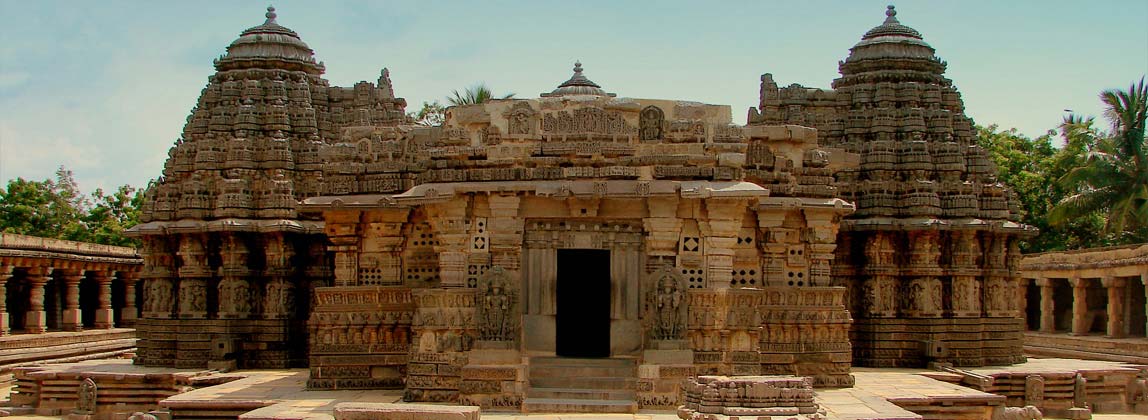


Bengaluru lies in the southeast of Karnataka. It is in the heart of the Mysore Plateau at an average elevation of 1010 m (3,448 ft) and covers an area ofBangalore City 1741 km² (896 mi²). A metro rail project, development of arterial roads, host of civic infrastructure projects, plans to augment power and water supply and a second ring road are all on the anvil together. Bengaluru is a city heading for exponential growth and commercial development. The capital city of Karnataka, Bengaluru, the fifth largest city in India, is the perfect blend of natural beauty and man-made marvels of architecture and technology. Blessed with a salubrious climate and dotted with beautiful parks, its tree-lined avenues, its trendy, yuppie downtown, and the software flood, Bengaluru truly offers one a picture of striking contrasts.
Bengaluru the software hub and Silicon Valley is India's most prestigious address for a corporate office with superb air connections and stability in law and order. For a tourist, the city is a place of beautiful parks and lakes and for the youth it is a hangout zone with pubs, malls and fashion statements. Right from the inception of IT sector in early 1990's, the city has witnessed an exponential surge in the influx of big business moguls, tourists, students and travelers from various spheres of the globe. Bengaluru is renowned, not only for its own beauty and technological advances, but also for its easy access to the marvels of the land around it. The intriguing sites of Bengaluru include gardens, universities, temples and ancient ruins. The city is a gateway to southern India and is well connected to other major cities. Today it has almost become the fastest growing city in Asia. Bengaluru has become a major business hub with aviation sector registering a higher than average national growth.
The city of Bengaluru has quite an interesting history attached to it. Right from its name to its becoming the IT capital of India, each stage in the history of Bengaluru is worth mentioning. The term 'Bangalore' is an anglicised version of 'Bengalooru', a Kannad term. After India gained independence in the year 1947, Bangalore became the capital of Karnataka. The city of Bangalore was renamed Bengalooru in the year 2006. Even though the term 'Bengaluru' is still very common, now the official name of the city is Bengalooru.
The Bangalore Palace was built in 1887 by Chamaraja Wodeyar depicting the Tudor-style. Windsor Castle was the brainchild, behind the construction of this Palace. The construction has fortified towers and its interiors are elegant carved of wood. The palace is complete with Gothic windows, battlements and turrets.
It remains closed on Sundays
The Bull Temple, located in Basavanagudi is one of the oldest temples in Bangalore. The temple is dedicated to Nandi, the bull, which is the mount of Lord Shiva. Nandi, the awesome monolithic deity of the Bull Temple, attracts visitors, tourists and devotees from all parts of the country and outside. With a height of 4.5 m and 6 m long, the statue is carved out of a single granite rock and is older than the temple in which it is housed.
City Museum that was opened in 1886, one of the oldest in the country. Has 18 galleries including Neolithic finds from the Chandravalli excavations, and from the Indus Valley, especially Mohenjodaro antiquities. Also antique jewelry, textiles, coins, art, miniature paintings and geology.
The gardens are said to be laid out by Haidar Ali and his son Tipu Sultan as a summer garden in the 18th century, has numerous flowers, hundred year old trees from many countries and the lotus Pond. There are over 1800 species of tropical, subtropical and medicinal plants and a Floral Clock. There is a glass house depicting London's Crystal Palace and this is the main center of attraction. The garden is well protected with stone walls which act as enclosures. It has four approach gates.
It is situated at a distance of approximately 30 km from the city of Bangalor and founded by Protima Guari, one of the finest Odissi dancers of India. Now under the management of Ms. Lynne Fernandez, Nrityagram Dance Village was designed by the Goan architect, Gerard Da Cunha. One of the unique features of the village is its traditional gurukula style of teaching. Students from various parts of the world come to this village to get trained in the various forms of Indian classical dances, like Bharatnatyam, Odissi, Kuchipudi, etc.
The Venkatappa Art Gallery is situated in the Karnataka Government Museum. It exhibits some of the rich art of Bangalore. The Art Gallery is comprised of two floors and displays 600 paintings. The government museum was established in the year 1865. The museum has exhibits of antiquities from Mohenjadaro and terracotta from Mathura. The museum is a must visit place for art lovers. It has some of the exclusive collections of scenic displays. The museum also has some of the great works of the famous artist K. Venkatappa. The museum
remains closed on Wednesday and on public holidays.
Vidhana Sabha is a noble building built exclusively of Bangalore granite. It is a testimonial to temple architecture. The building is Bangalore's best known landmark. It is 46 meter high. Vidhana Soudha is one of Bangalore's important buildings. The building is constructed entirely on the Indian style of architecture. All the four corners have four domes. The main entranceway is eclipsed by the four headed lion. The lion is the symbolic representation of Indian sovereignty. The construction of the building was started in the year 1952. It took more than five thousand manual laborers, 1500 scammers, masons and wood carvers and 4 years to complete the building.